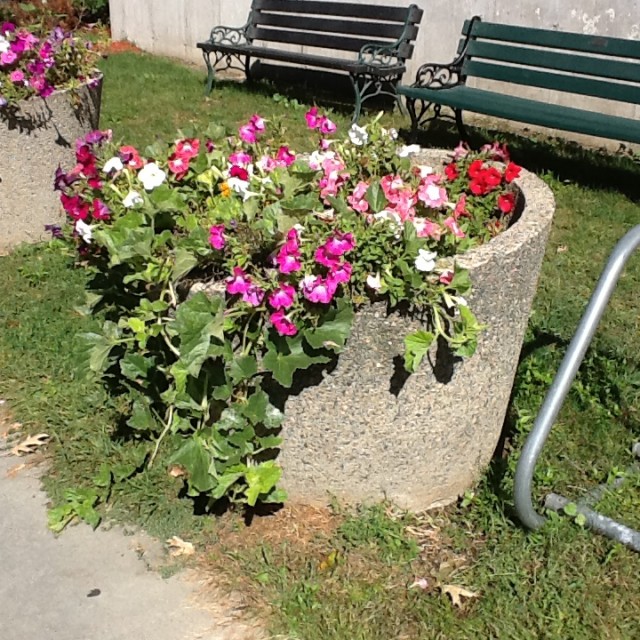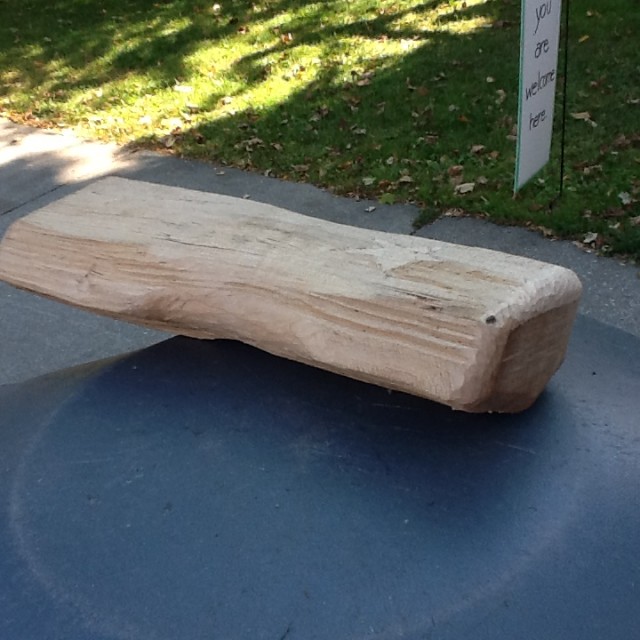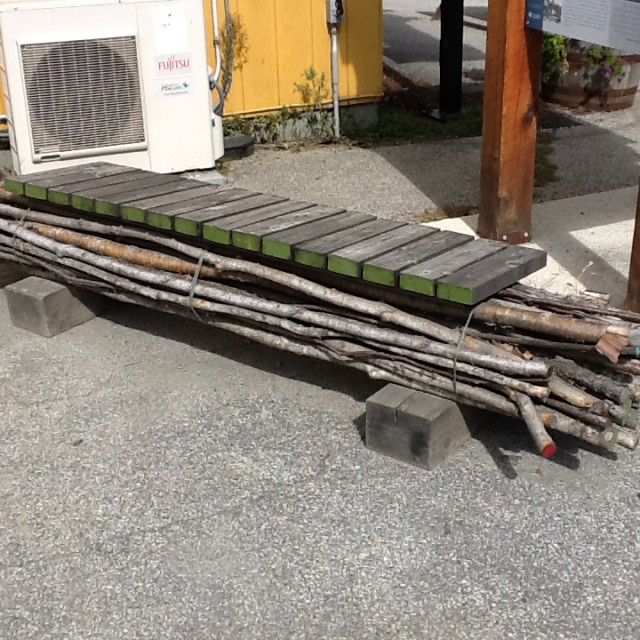Vermont Looks Like Vermont: Everyday Paths
I walk — to the post office, to the food co-op, to work. Sometimes I just walk to walk. When I walk to walk, I enjoy following a nearby path up a smallish hill to a bench that overlooks downtown Montpelier.
None of these walks take me very far afield, nor do they depart much from paths previously laid out. Admittedly, I am not much of an adventurer. When you walk the same paths everyday, you don’t have to be the most attuned looker to compile an inventory of the common sights and sounds — the time of day that ducks can be found on the Winooski River, the season that finches suddenly appear to pick seeds from split pods atop raspy flower stalks, the sound of a short train trundling along, laden with granite from the quarry.
Accompanying the myriad repetitions that exist within a given environment are the human interventions that quietly disrupt the usual or intended order. Think of the numerous impromptu paths flanking many sidewalks — patches of earth worn by pedestrian deviation. In these and other minor acts of aesthetic disruption the human impulse to be benignly contrary is appreciatively evident.

A row of planters in front of the Post Office/Federal Building on State St. in Montpelier, Vermont. Each planter is full to bursting with petunias. In one planter there grows an unidentified squash.

A piece of split wood placed on top of a rubbish bin along Main St. in Montpelier, Vermont. It has been chamfered, shows signs of further whittling on other edges and has a shallow relief star carved into the skyward side.

Outside Red Hen Bakery & Cafe in Middlesex, Vermont, there are a bunch of branches gathered, tied, ends painted and a board placed across the top. Inside the coffee shop, I learn that most people didn’t even know that it was outside, and of those who do, they assume that it is a bench. One of the workers looks out the window and says, “See someone is sitting on it.” Must be a bench.
Author’s Note: I owe a nod of thanks to recent conversations with, friend and artist, Ryan Mandell about his work which considers the human relationship to architecture and urban planning — the tension between plan and implementation of a design. Though the environments we engage with critically and the nature of our respective work are rather dissimilar, there are moments when the spirit of the inquiry is shared. The thoughts stated above were undoubtedly a product of these conversations.
Radio Aktiv Sonic Deep Map (2013)

SUPERKILEN – Extreme Neoliberalism Copenhagen Style

Read Brett's essay about the park.
Download our guide:

This is our guide to how-to books from the counterculture of the 60s and 70s. Click to get the download page.
Categories
- Agriculture (11)
- Animal sounds (1)
- Artist parents (19)
- Arts and culture (106)
- Bees (3)
- Book reviews (14)
- Books (18)
- Critical essays (5)
- Daily Photo (5)
- Design (36)
- Dirt (11)
- Environmental activism (43)
- Exhibitions (24)
- Farms (11)
- Forest (7)
- Friday connect (15)
- Growing (42)
- Habitat (38)
- Homesteading (16)
- Interviews (15)
- Kitchen (14)
- Living structure (9)
- MISC (15)
- Mythological (2)
- Neighborhood (83)
- Ocean News (1)
- Our Art Work (21)
- Personal – Design/Art (3)
- Play (2)
- Playground (4)
- Projects (21)
- Public space (53)
- Resilience (13)
- Sea Side (2)
- Sojabønner (2)
- Tofu (8)
- Vermont correspondence (7)
- Water (3)
- Wednesday picture (31)
- Workshop (1)
Video interview:

Watch our interview of SeedBroadcast, a mobile project that is part seed library and part seed-saving-story-collecting machine-recording the stories of seed saving, farming, and food sovereignty work being done around the US.

Download a poster Bonnie made about biodiversity in a vacant lot in the Amager borough of Copenhagen, in collaboration with biologist, Inger Kærgaard, ornithologist, Jørn Lennart Larsen and botanist, Camilla Sønderberg Brok: A BRIEF TAXONOMY OF A LOT

We made and installed a network of bat houses in Urbana, Illinois, to support the local and regional bat population, but also to begin a conversation about re-making the built environment.
READ MORE
BOOK REVIEW:

We write often about artists and art groups that work with putting ‘culture’ back in agriculture. Here is a new favorite: myvillages, a group of three women based in Germany, the Netherlands, and the UK. Read more...

Post Revolutionary Exercises
We really admire the dedicated hard work of Kultivator who seeks to fuse agriculture and art in their work. Click this sentence to get a PDF of their poster collection called "Post Revolutionary Exercises."

Cultural Practices Within And Across
This amazing book networks urban and rural resilience and sustainability projects around the world. Deeply inspiring projects in Romania, Paris, San Francisco, and elsewhere.
• Read our review of the book.
• Buy the book.
• Download the book.







